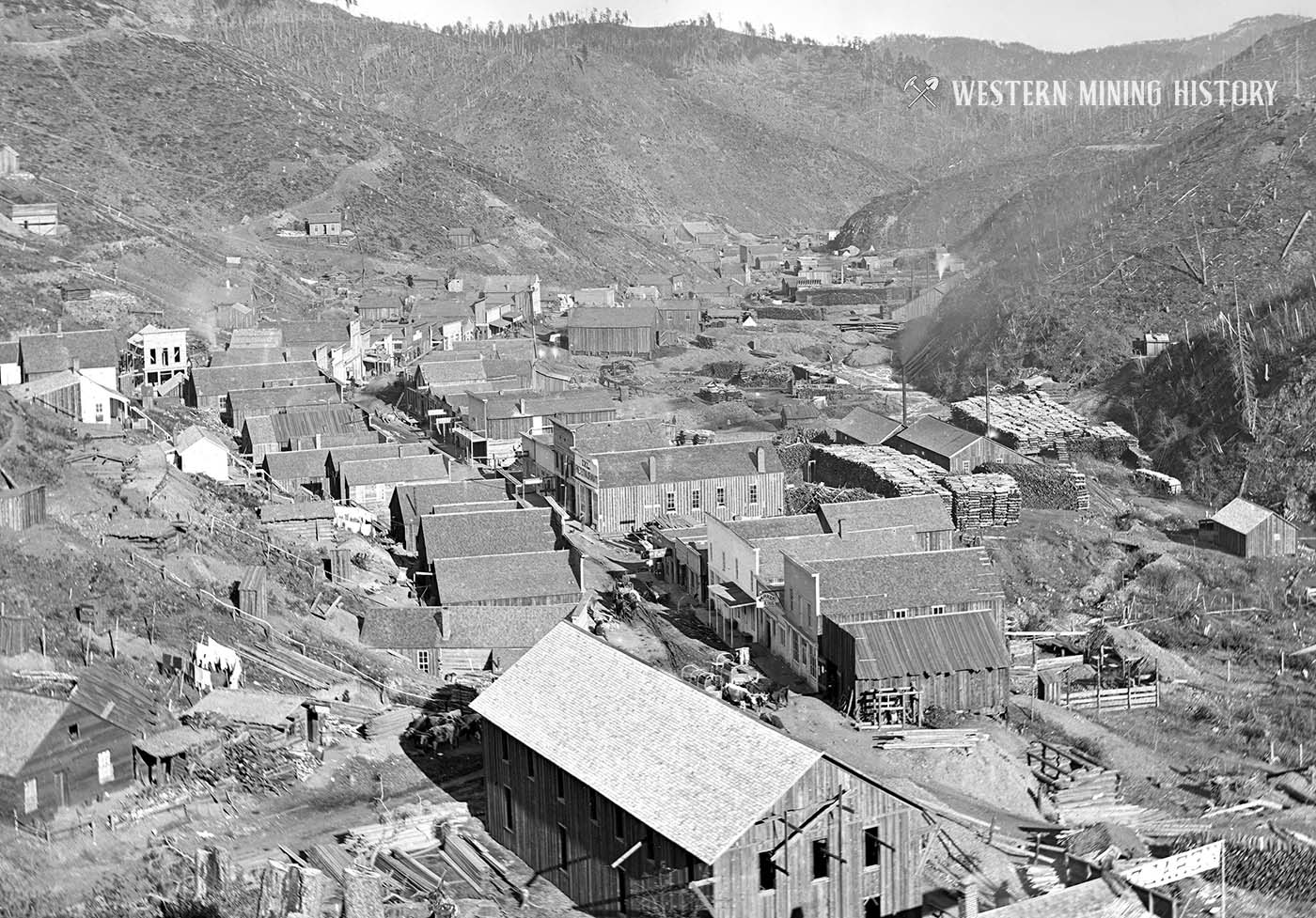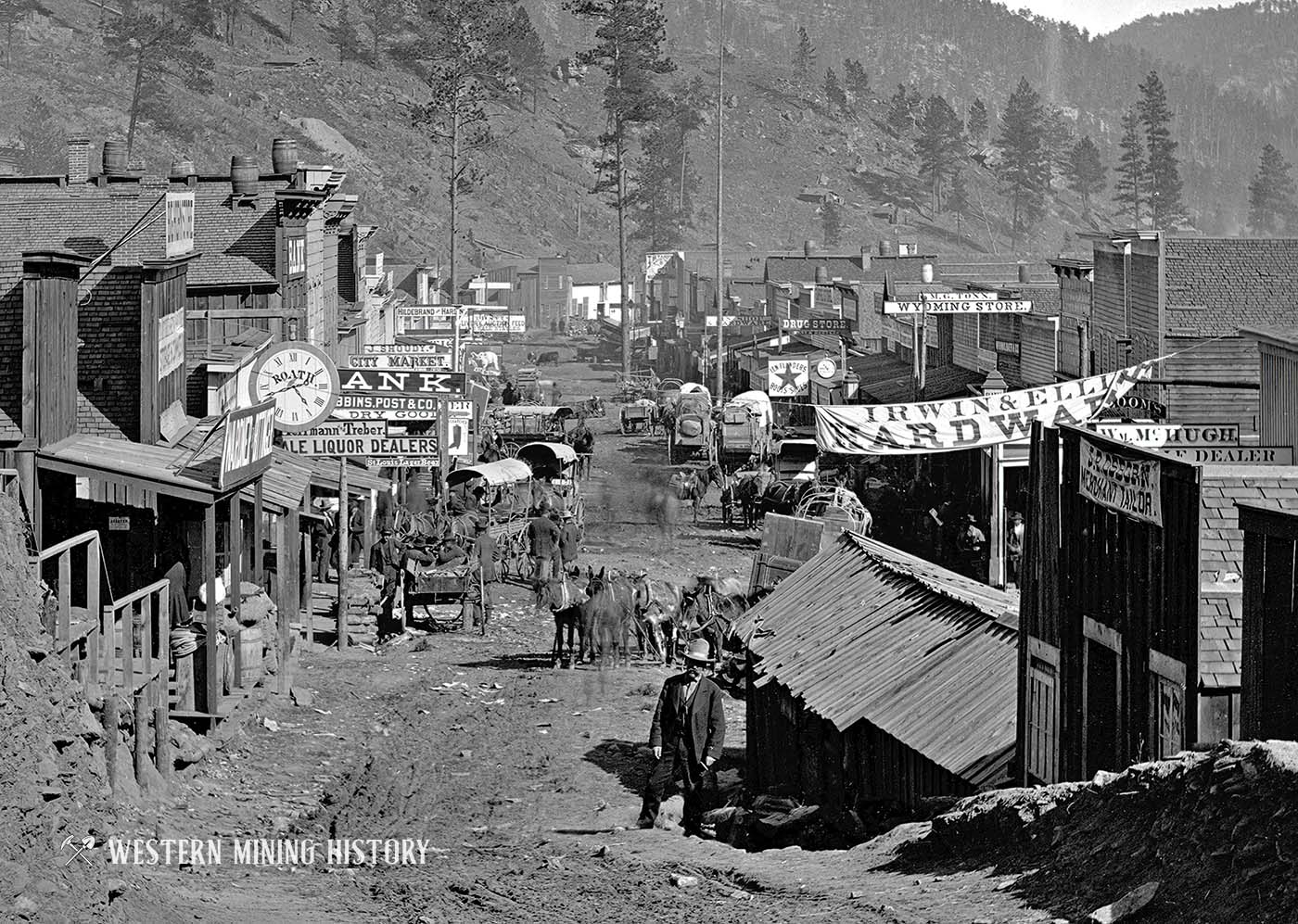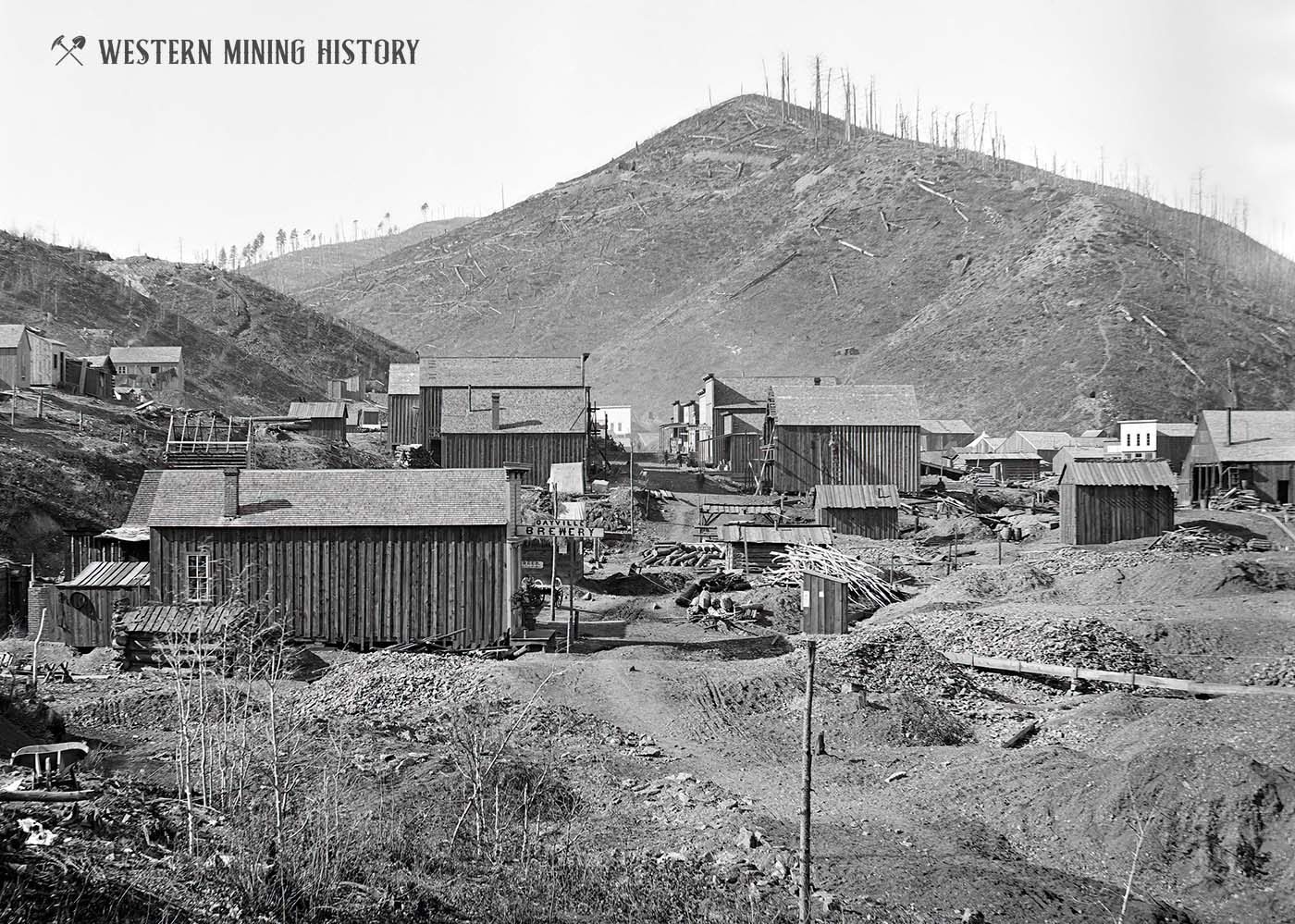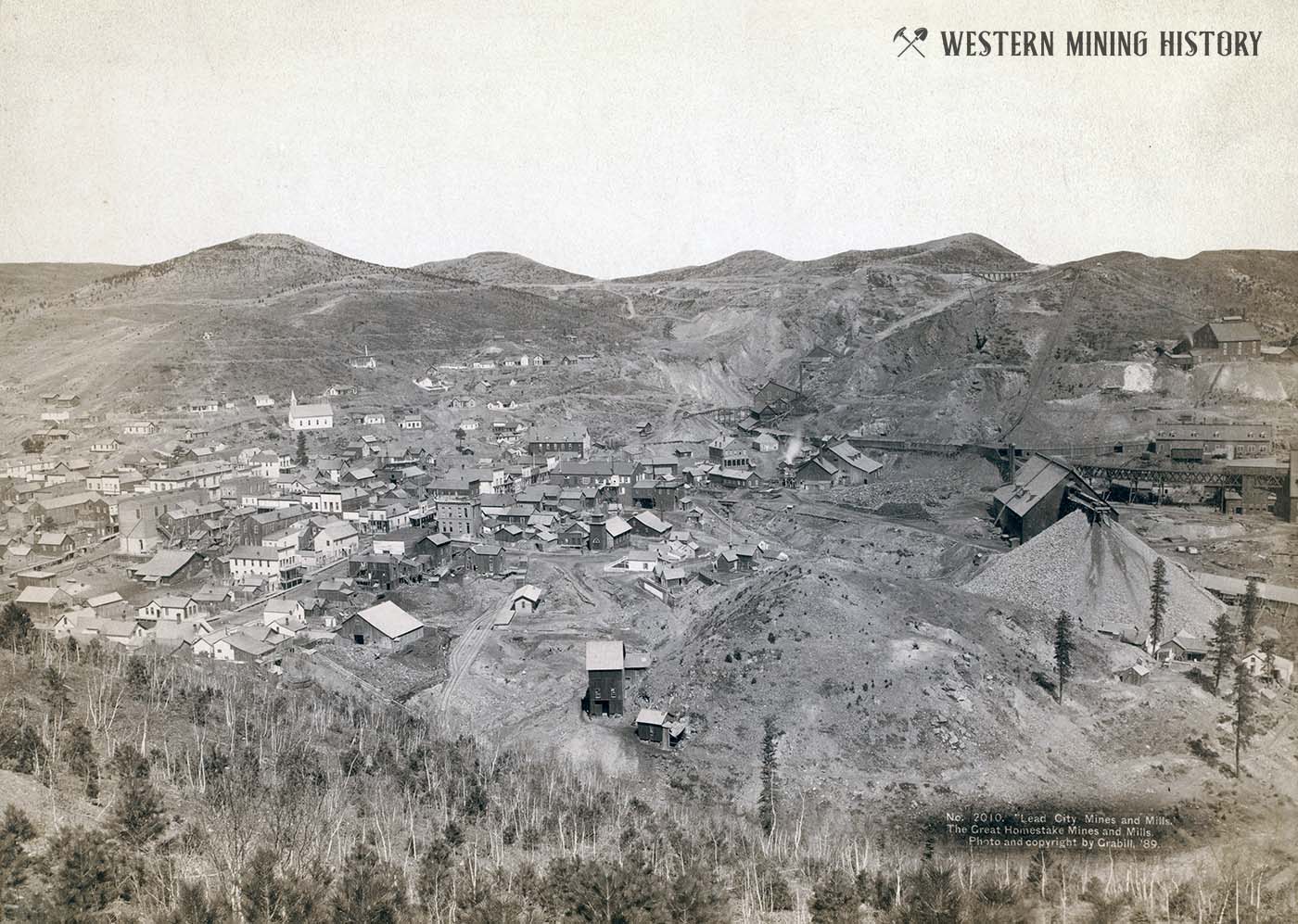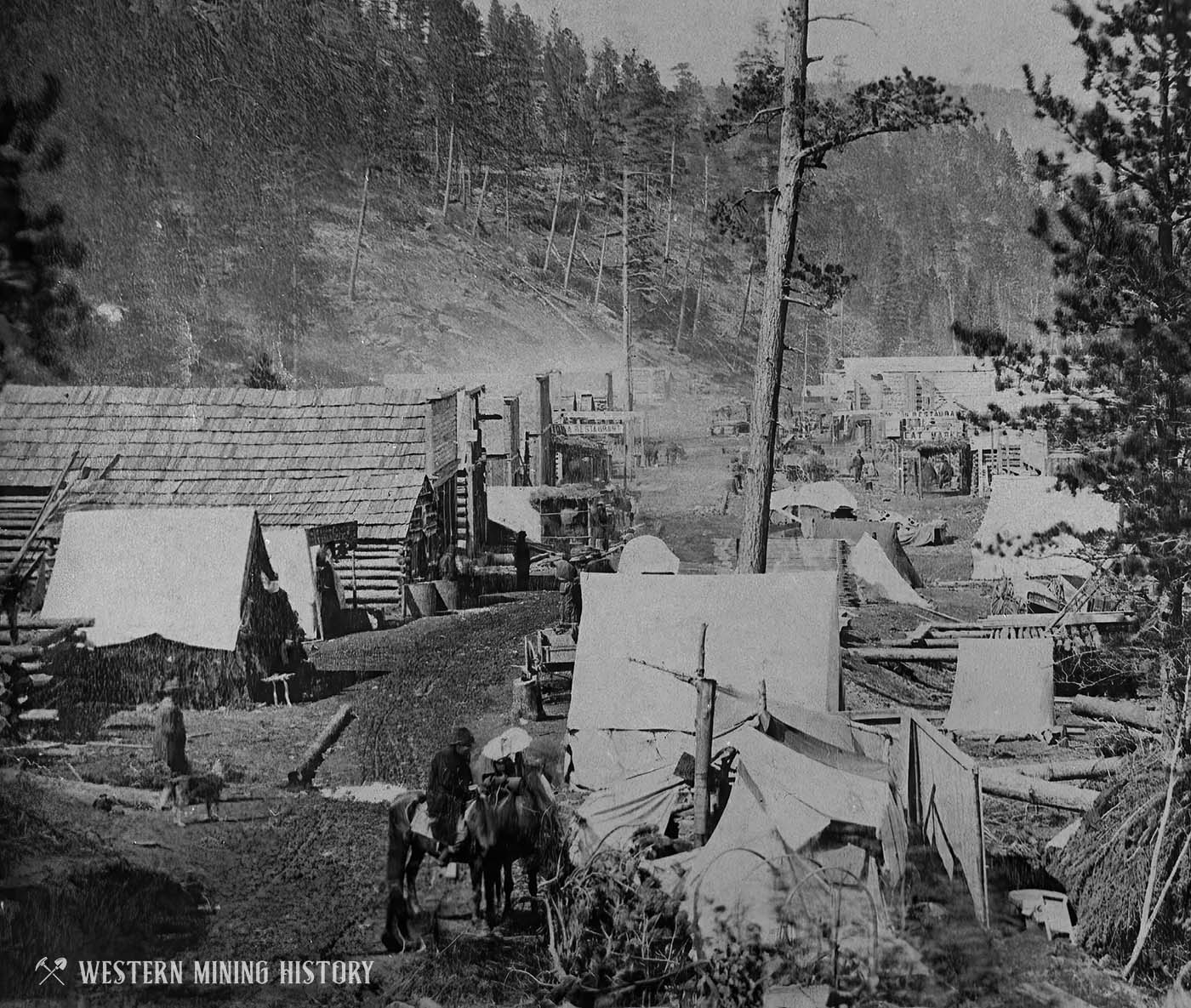Central City History
Central City was one of the first settlements formed in Deadwood Gulch following gold discoveries in November 1875. William Lardner and Ed McKay built the first two cabins at the site in preparation for staying through the winter. By 1876 thousands of men had filled the gulch, and the town grew rapidly.
In January 1877 a public meeting was held, and the group of settlements among the rich placers of this part of the gulch were organized into a formal town. A former resident of Central City, Colorado gave the town its name. Other nearby settlements were later absorbed by Central City, including Blacktail, Gayville, Golden Gate, and Go To Hell Gulch. By the summer of 1877, Central City and its satelite camps had around three thousand residents.
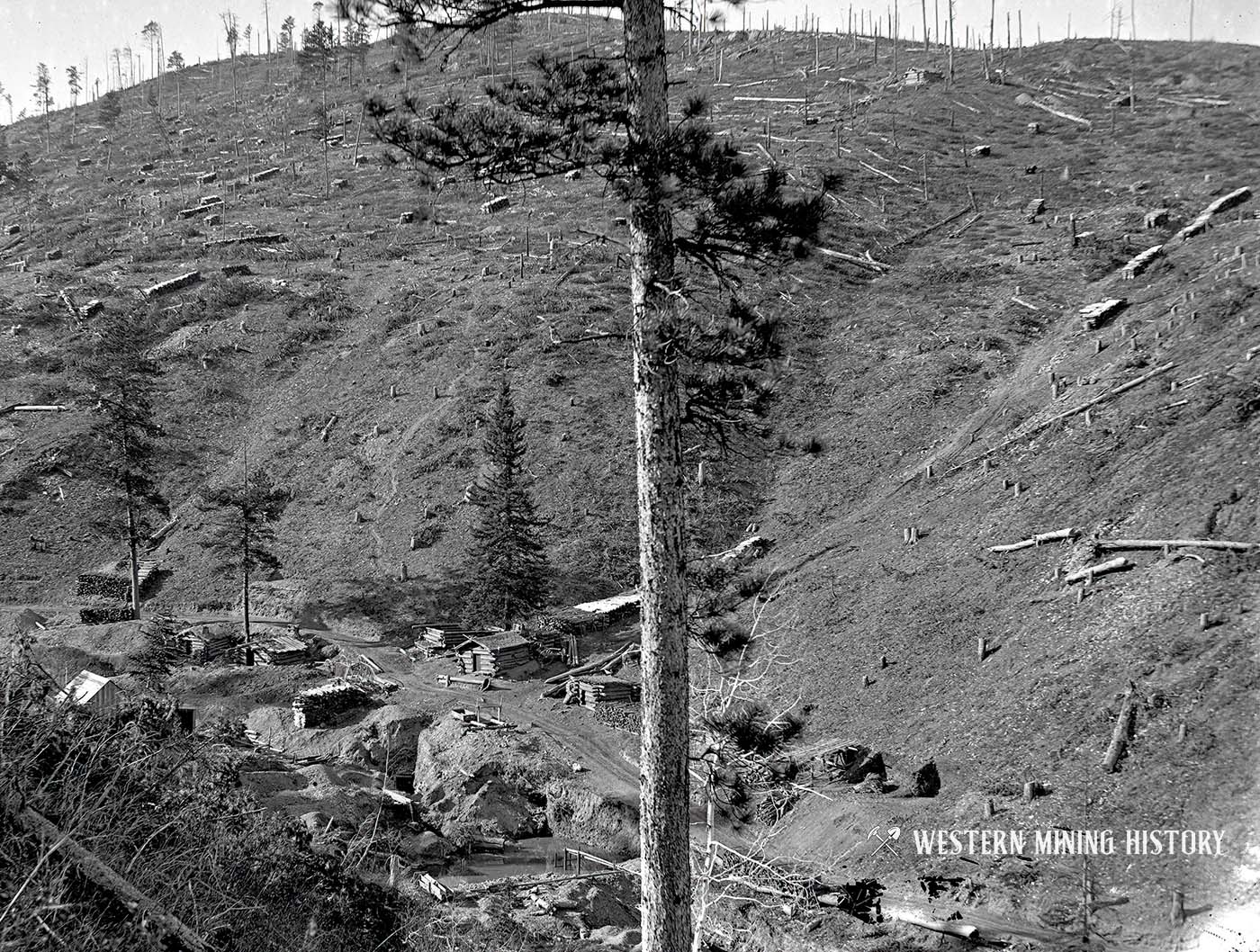
Buildings of all types were built along the narrow gulches and between the placer mining operations. Saloons, brothels, gambling dens, log cabins, miner's tents, were just some of the structures that formed the early town.
They lawlessness typical of early mining camps was gradually replaced by civilized society. The first school was opened in the fall of 1877. In 1879 the first Catholic church was established. Five newspapers operated at various intervals here during the late 1800s.
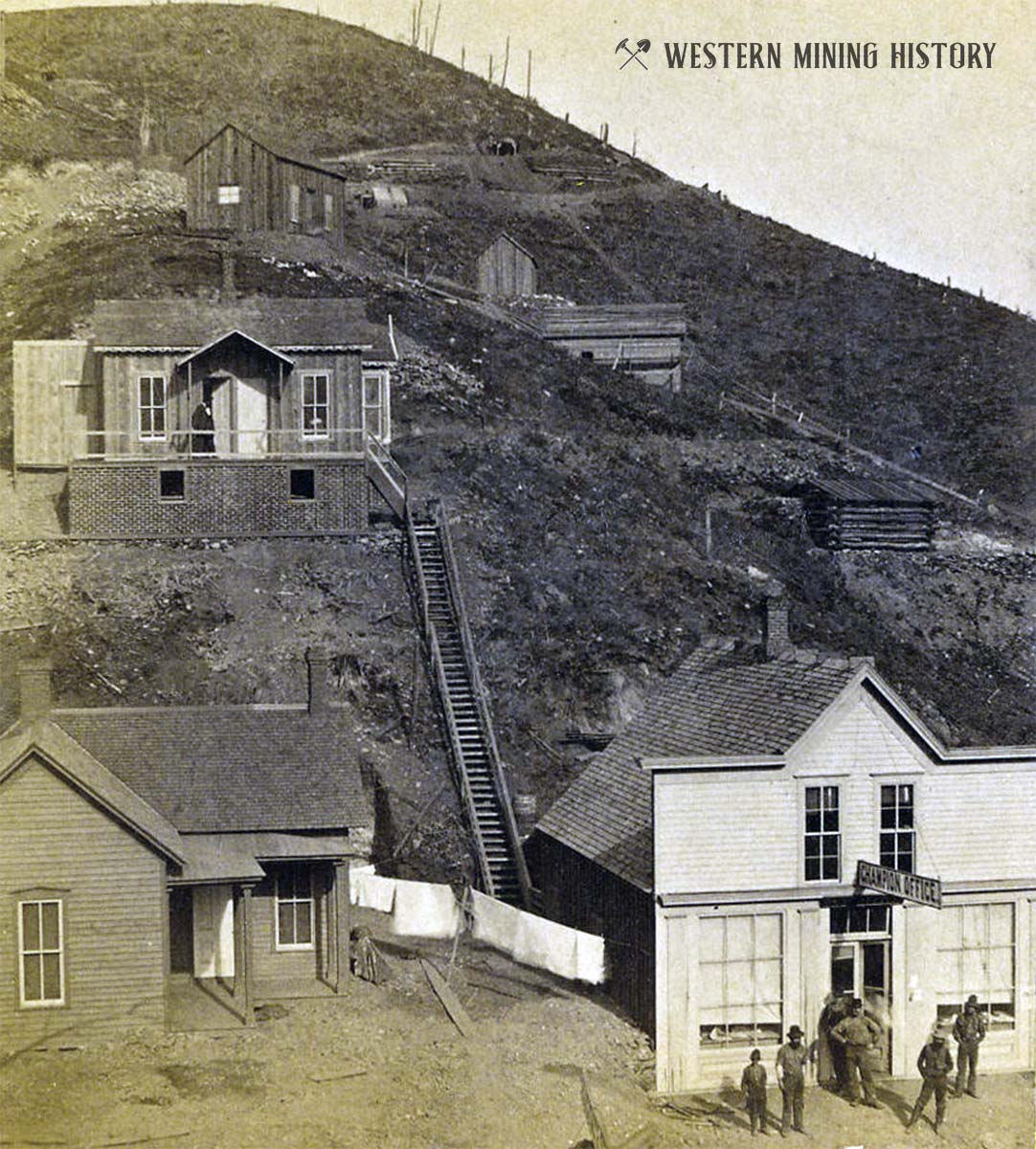
By the fall of 1877 Central City was starting to eclipse Deadwood as the most important city in the gulch. An article in the Sioux City Journal reported the following:
Deadwood is on the decline, being finished when the pilgrims ceased coming in. One of their theatrical troupes has gone up to Central and located. The large door, sash and blind factory, planing mill, etc., is preparing to move to Lead City, where it will use its spare power in crushing ore. By way of judging, they are trying to get up a company in Deadwood to put up a 100-stamp mill, build a railroad to the mines up here and take the ore down there to crush.
It all won't win. Deadwood must come in second-best in the end. There is nothing there to make and sustain a city, but money, and they have none too much of that. The telegraph now comes in through Central, by this place, the old line having been taken down, this being the shortest route and best grade.
This decline was short-lived however, and Deadwood rebounded to become the most important settlement in the Black Hills.
The still famous "Black Hills Gold" jewelry brand was started in Central City in 1876. In 1886 the business moved to Lead, then later to Deadwood.
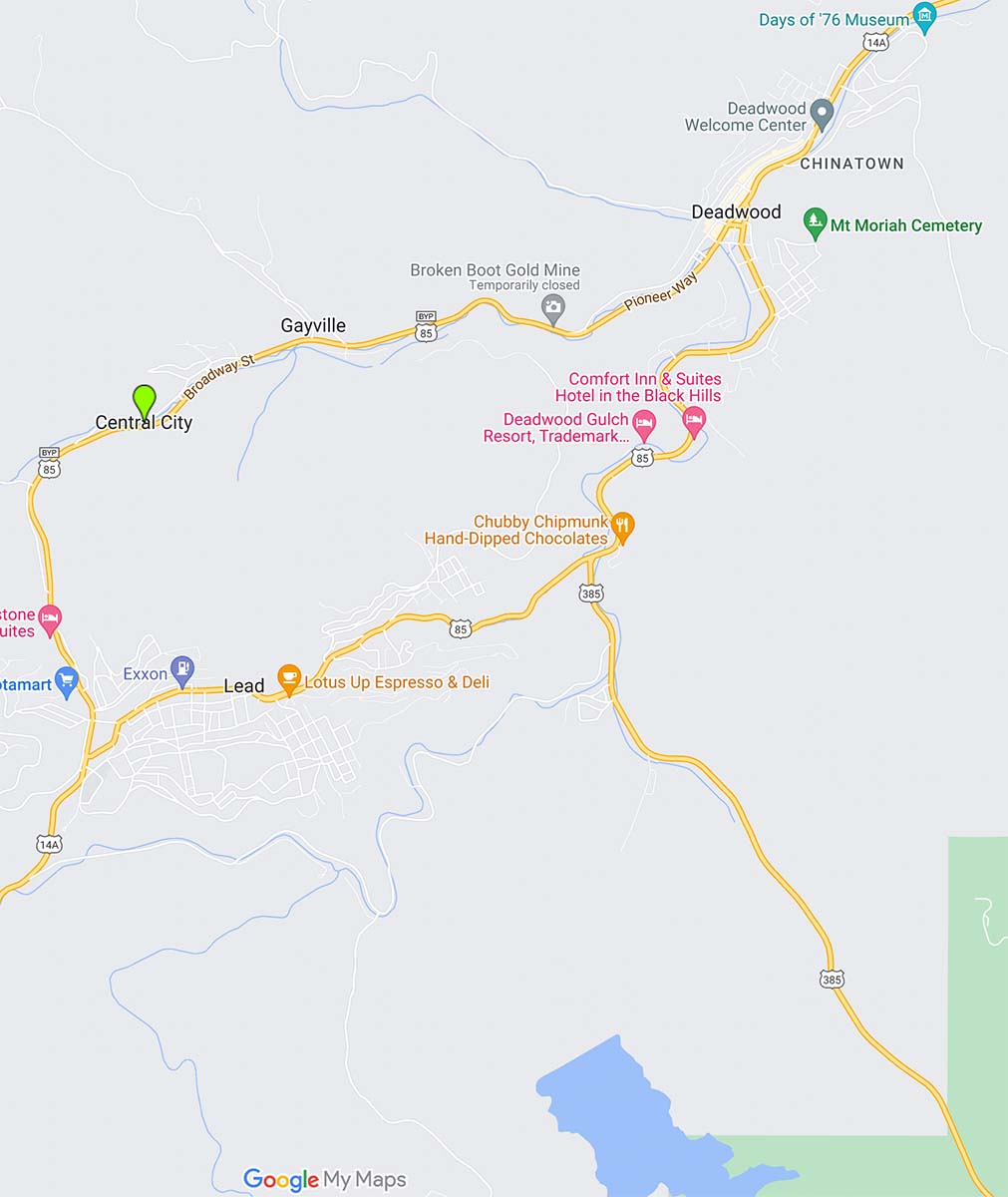
Central City was an important early milling center for lode mining operations in the area. The photo at the top of this page appears to show at least three mills that operated in 1877. Many of the mills were custom mills that were put into operation to mill ore from the numerous small mines that could not afford their own milling operations.
In the 1972 publication The Boom and Bust of Central City by the South Dakota Historical Society, the following mills are listed as being in operation by 1878 in and around Central City:
Sheldon Edwards Mill (20 stamps), McLaughlin and Cassell Mill (25 stamps), A.P. Moore and Company Mill (20 stamps), John P. Pearson Mill (20 stamps). Brown and Thums Custom Mill (30 stamps), Thompson Mill (30 stamps). Central Gold Mining and Milling Company Mill (20 stamps). Union Mill (25 stamps), Cunningham, Dorrington and Company Mill (20 stamps). Alpha Mill (20 stamps), Elliot Lumber Company Gold Mill (20 stamps), Chicago Mill at Anchor City (10 stamps). Badger Mill (20 stamps), Harlan Mill (20 stamps), Girdler and Orr Mül (10 stamps), Wolsmuth and Goeway Mill (10 stamps). Black Hills Gold Mining Company Mill (20 stamps), and the Lancaster Mill, Ledwich Brothers Mill, A.P. Moon and Company Mül, Lower Central Mill, and several others no doubt hidden away in the gulches.
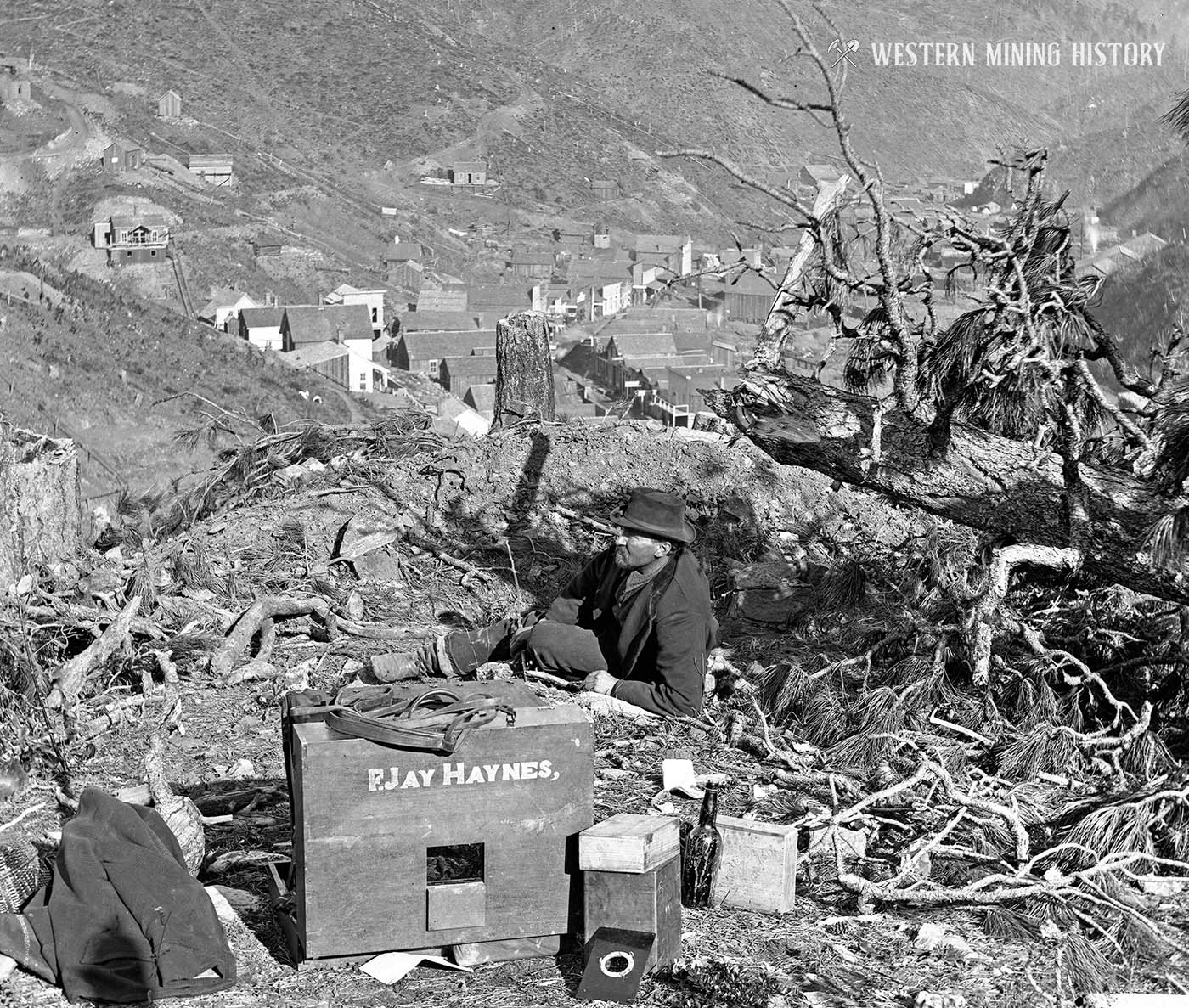
In late 1877 a conflict between two adjacent mines - the Aurora and the Keets - erupted into violence. The story is an interesting one, apparently involving deception and theft of Aurora ore by the Keets Company, culminating the death of one of the owners of the Aurora mine. The story is told through an 1877 newspaper article that is included lower on this page.
Just a couple months after the conflict, the Keets mine was in the news again, this time when the new owner of the mine was unable to pay his miners. The miners, deciding to strike, stocked the mine with provisions and fortified the entrances, refusing to leave until they were paid. Sherriff Seth Bullock was called in but his negotations with the miners failed. Bullock called in federal troops and finally after 17 days underground, the miners surrendered and came out peacefully.
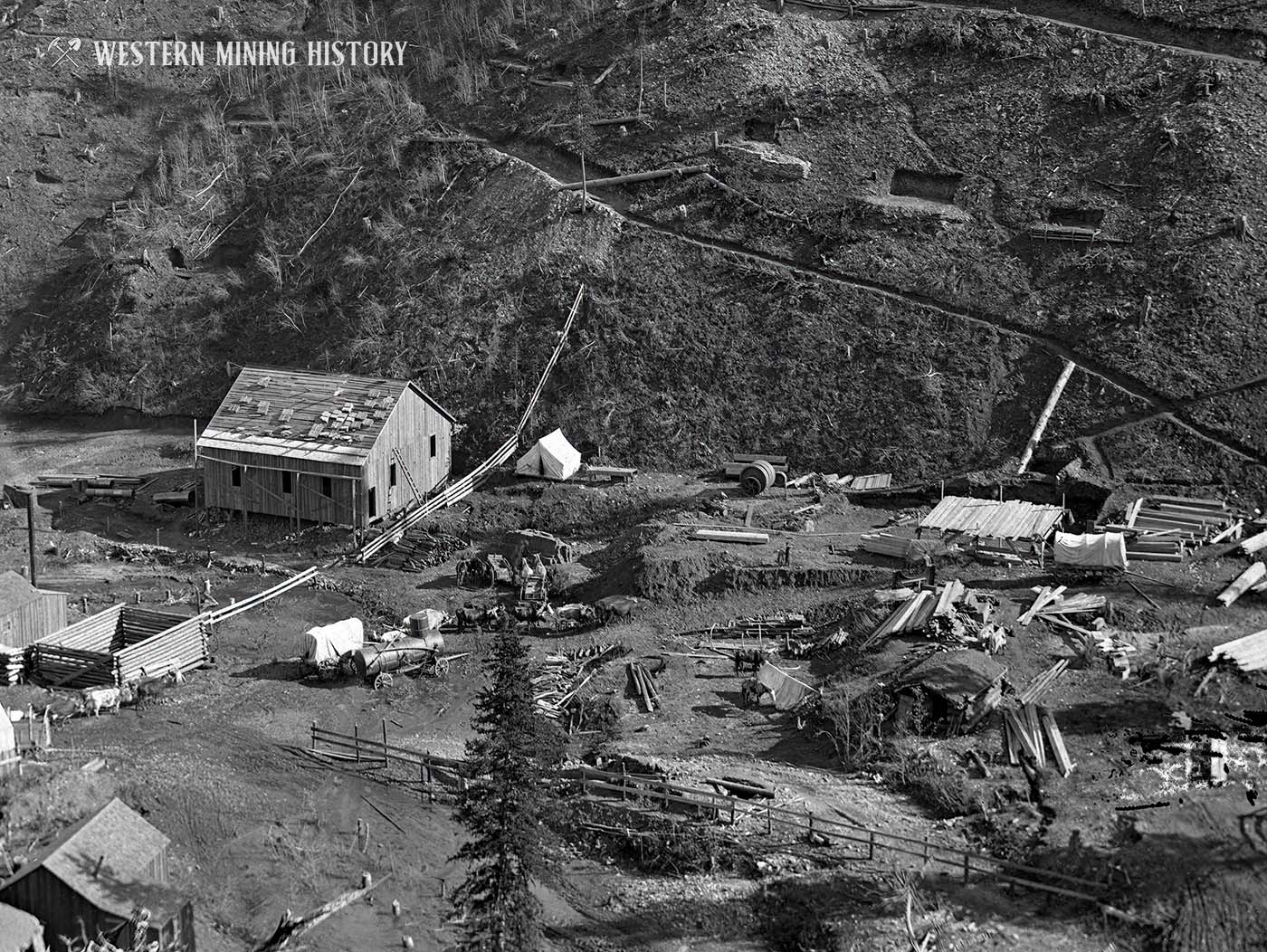
By 1880 lode mining had replaced placer mining as the primary industry in the gulch. The DeSmet and Hidden Treasure mines were the best known lode mines in the Central City area.
An 1883 newspaper article stated "Central City is booming in more ways than one. It has the Gustin Belt tunnel with millions in sight, and Henry Goetz beer hall, with fresh lager on tap, and the latter place attracts the biggest crowd."
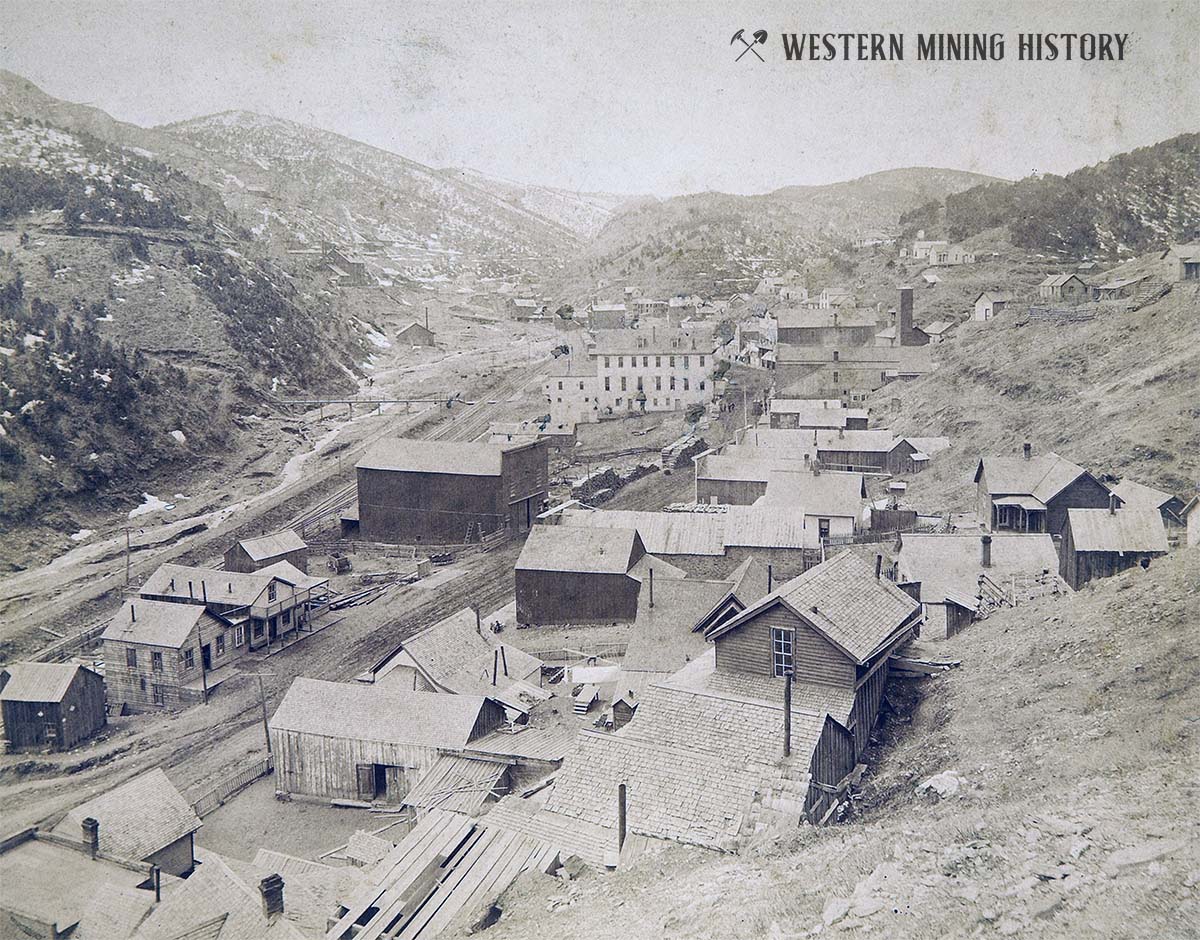
In 1883 Central City was damaged extensively by flood waters. A fire in 1888 burned most of the commercial district. The photo above shows the town before the fire, and the photo below shows the extent of rebuilding five months after the fire. Although the town rebuilt, it was never the same.
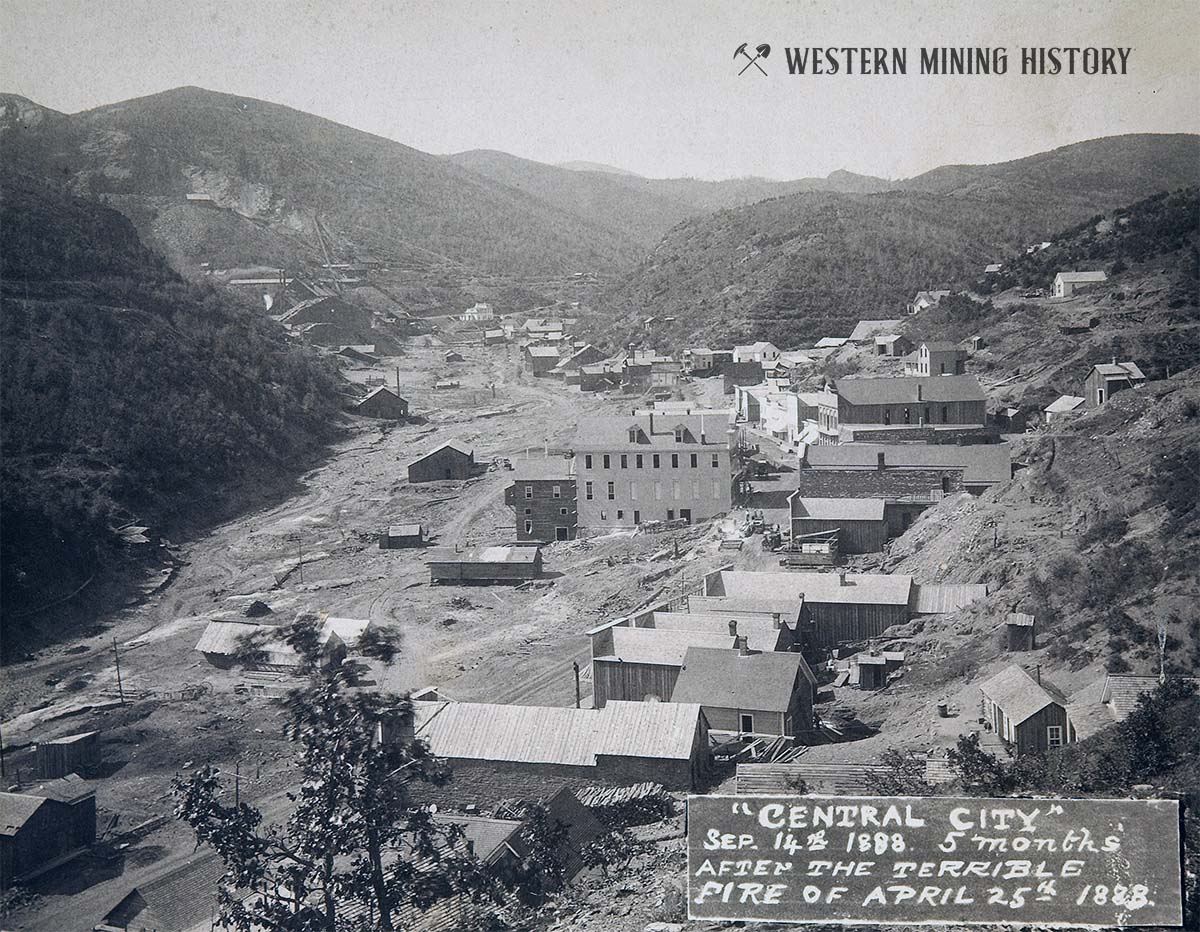
By 1899 most of the district's important mining operations were found in Deadwood and Lead. Only the DeSmet and Deadbroke mills continued to operation in Central City. Many mining operations came and went over the next few decades which kept the town active and the miners employed. A resurgence of mining in the 1930s improved the towns fortunes, as men desperate to work began placer mining and small-scale lode mining throughtout the district.
Ultimately the great Homestake mine, which had grown to be an enormous operation that swallowed up many of the areas prominent mines, was the only major operation left. By the 1970s the town had faded to the point that the post office closed, and one of the Black Hills most important mining cities faded into obscurity.
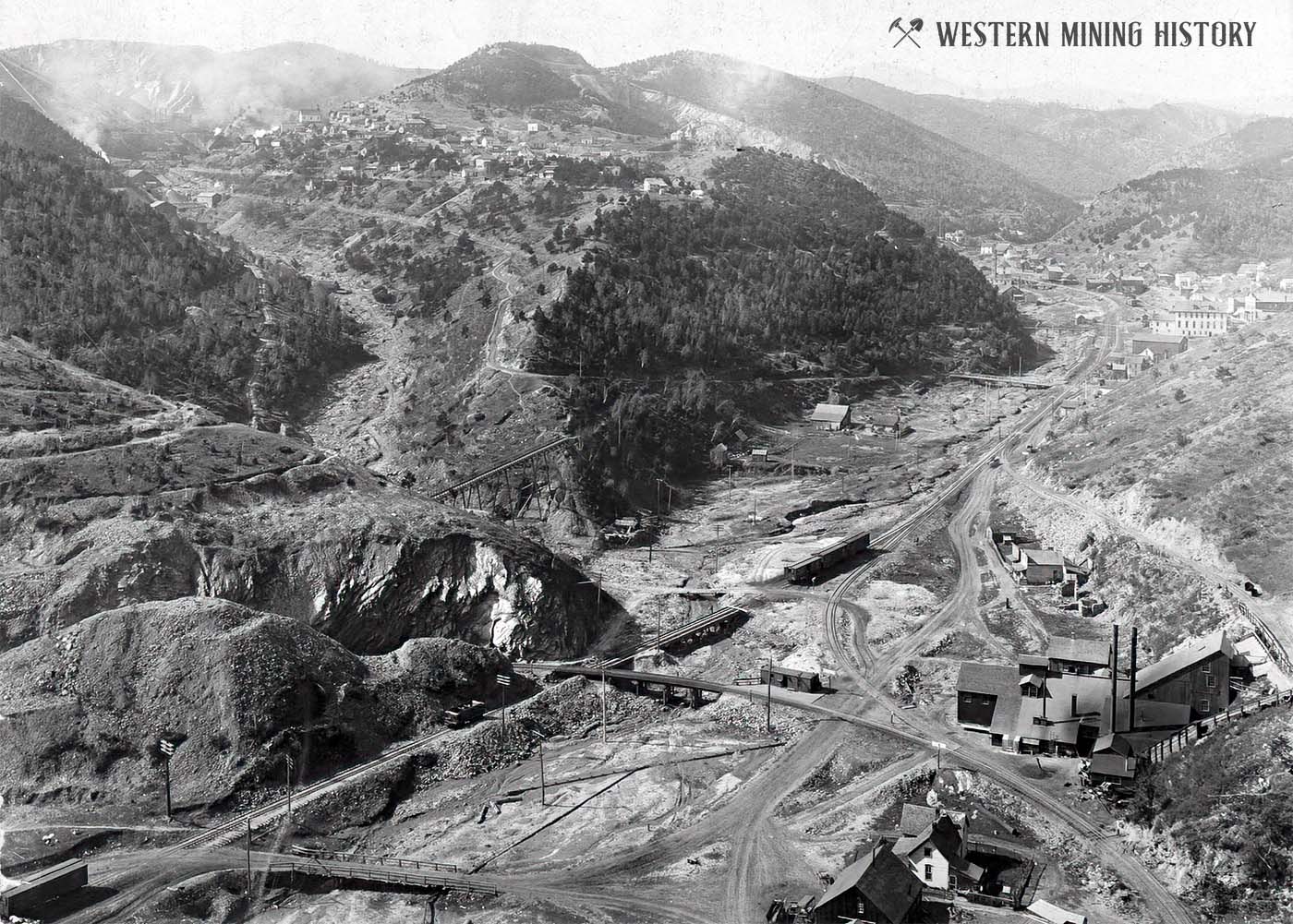
The Aurora-Keets Mine Conflict
THe following article appeared in the September 15, 1877 edition of the Sioux City Journal.
The only news of interest I have to report is the killing of Cephas Tuttle, one of the owners of the Aurora mine, by the hired assassin of the Keets company. There are thirteen of them in jail in Deadwood now, under- going a preliminary examination, and the probability is that a case will be made out against seven men, one of whom fired the fatal shot, and also against Mr. Keets, owner, and Mr. Whitney, owner and superintendent of the Keets mine.
These mines are situated on the Hidden Treasure gulch, commencing nearly at the head of it. The first location was made by the Hidden Treasure company, running north and south across gulch. The next was the Aurora just above the Hidden Treasure, and adjoining them the Keets. Mr. Tuttle was the original locater of the Aurora, and has been on it and in possession ever since, and those who should know tell me that his right was perfect.
The Keets company desired to open and work their mine, and in order to do so it was necessary to get permission from the Aurora to run a tunnel through their ground (300 feet) until they struck their own ground, otherwise they would have to sink a shaft from 80 to 100 feet, and would have to raise their ore this distance before they could get it to the surface. This is owing to the rise in the ground from the town side of the Aurora to the Keets. Permission was granted them, and last spring they run in their tunnel, and soon began to take out ore of a paying quality.
A large force of men was employed in the mine, and they took out on an average and had milled as fast as taken out, 100 tons daily. Soon after commencing an armed guard was placed at the mouth of the tunnel, and no one allowed to go in excepting the miners, or those with a pass from Whitney, superintendent. It was supposed by Mr. Tuttle that every pound of ore taken out was taken from the Aurora, but of this he could not be certain, as he was denied admission to the tunnel on his own ground.
About August 15, a young German who owned a half interest in the Aurora, sold it to Senator Spencer and others for $15,000-got his money, and put out for the States. On the night of August 14, a body of armed men, in the interest of the Aurora, took possession of the Keets tunnel and drove the miners and guards out. The discovery was then made that all the ore that had been taken out by the Keets company had been taken from Aurora ground, and was estimated at over $100,000.
This armed body kept possession until the evening of August 15, at which settlement was made and a written agreement entered into, in which the Keets company agreed to go on with the tunnel until Keets' ground was reached, and take no more ore from the Aurora mine than was actually necessary to make their tunnel, and this ore was to be piled up on the dump. The hatchet was now seemingly buried, and all went on smoothly for a few days, when the guard was again placed at the mouth of the tunnel and no one admitted, not even Mr. Tuttle.
Tuttle had sunk a shaft on his ground that connected below with the Keets tunnel and this shaft was filled up by the Keets men with rock. On Sunday last, Tuttle went to the mouth of the tunnel and notified them that the next day he would blow the shaft out with powder and they must look out or they might get hurt. On Monday morning he again went there and told them he was about to put in the charge, and they must keep back from near it, or some of them would get hurt.
He was told by them that if he did he would get shot. He answered that he could not fight an army single-handed, but if they would come out one at a time he would give them all the shooting they wanted. This they declined to do, and Tuttle returned to his cabin, a short distance away, from which he soon made his appearance with a box of giant powder, fuse, etc. Whilst placing this in the mouth of the shaft, several shots were fired at him from the Keets cabin, which had been turned into a fort by cutting loop holes through the logs. None of the shots happened to hit him, and he succeeded in fixing his charge and; firing the fuse. The shaft was blown out, and Tuttle reached his cabin in safety.
A number of shots were fired into his cabin, but no damage done other than shooting through his stove breaking his dishes and the like. A short time after, Tuttle came out of his cabin and went to his wheelbarrow which stood in front of his door, and stooped down to grease it, when a rifle was run out of a port-hole in the Keets cabin, fired off, and Tuttle fell mortally wounded.
The sheriff and posse were soon on the ground and arrested some men who were in the Keets cabin and put them in jail. He also stationed a guard at the mouth of the tunnel, and at night arrested the four men that were in there holding the fort. The next morning Keets and Whitney were arrested, and, as I said before, they are all now in jail.
Tuttle was a sober, hard working man, also a man that nothing could intimidate. He has a brother, a Dr. Tuttle, who, I understand, became celebrated in his profession in the east, but who is now an extensive stock-raiser in Colorado. He will be here in a few days, and will prosecute to the bitter end. Before dying, Tuttle made his will, and gave $6,000 to a Mr. Johnston, who carried him into his cabin after he was shot, and to an Irishman who took care of him once when he was sick and broke he gave the balance of his fortune, which will be something handsome.
Nearby Mining Towns
These are a selection of notable mining towns near Central City.
Deadwood
Deadwood, South Dakota is one of the West's most historically significant mining cities, and the location of some of the Wild West's most notable events. Deadwood has seen extensive preservation of its historical buildings, and is a popular tourist center.
Gayville
Gayville, South Dakota was one of the first mining communities formed during the 1876 gold rush at the Black Hills, Dakota Territory.
Lead
Lead, South Dakota is the location of the Homestake - the nation's greatest gold mine. This mine operated for 125 years and produced over 40 million ounces of gold. As the mine grew, so did Lead, becoming one of the West's most important mining cities.
Mining in the Black Hills
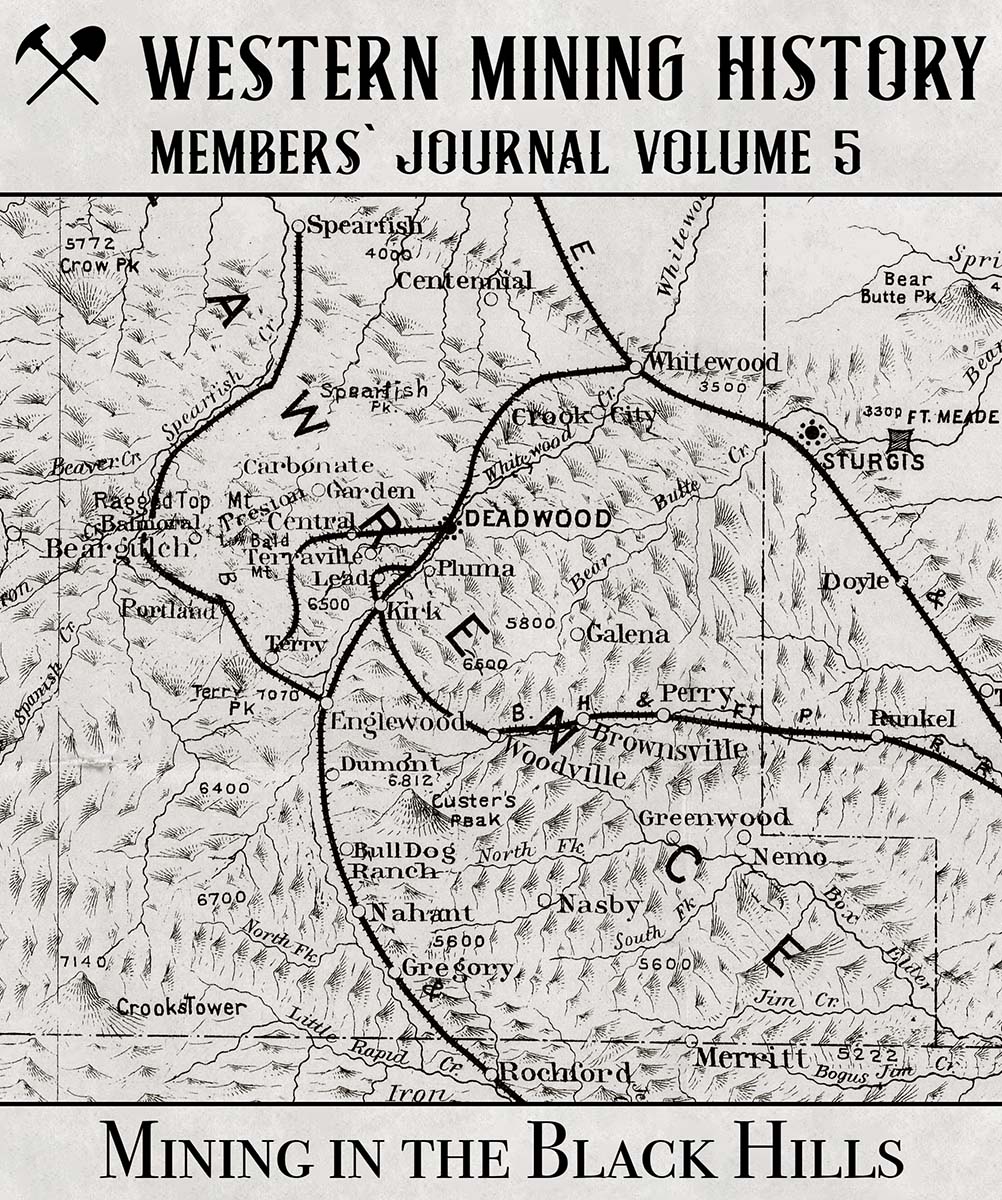
Western Mining History Member's Journal Volume 5: "Mining in the Black Hills", takes a closer look at the distribution of mining districts and towns the Black Hills of South Dakota.
Deadwood: The Ultimate Photo Collection
The Black Hills Gold Rush was one of the most significant historical events in the western United States. Deadwood: The Ultimate Photo Collection contains over 50 images capturing the early history of this famous gold region.
